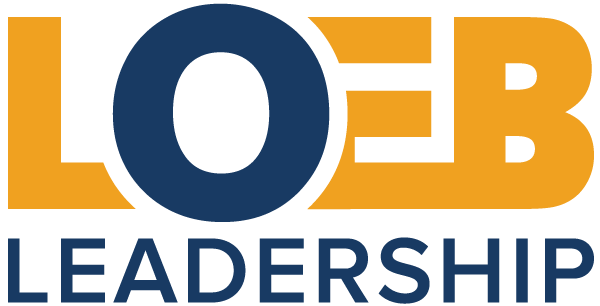Peer-to-Peer Recognition: Building Culture, Boosting Performance
Why Peer-to-Peer Recognition Matters
Recognition between colleagues is one of the most authentic forms of appreciation. Unlike annual awards or top-down praise, peer recognition is rooted in day-to-day collaboration. Colleagues see the small acts of effort, creativity, and perseverance that often go unnoticed by leadership. That makes the recognition feel genuine, timely, and relevant.
Research from Harvard Business Review shows that peer praise can have a stronger impact on satisfaction than pay increases, because it validates meaning and contribution in real time. Other studies find that recognition programs with peer components significantly reduce turnover and burnout, reinforcing not just performance but well-being.
Peer recognition also helps organizations embed their values into daily behavior. When employees highlight a colleague for living the company’s values, such as integrity, collaboration, or innovation, it makes those ideals concrete. Over time, this continuous reinforcement builds culture from the ground up. Trust grows, collaboration deepens, and employees are more willing to share knowledge and help each other across silos.
Best Practices for Building Strong Programs
The most effective peer-to-peer recognition programs are easy to use, values-driven, and consistent. Technology can play an important role here. For example, some companies embed recognition directly into tools like Slack or Microsoft Teams, allowing employees to send quick kudos in the same place they collaborate. Others leverage recognition-specific platforms or simple internal systems.
Programs are most powerful when recognition is tied to clearly defined values or behaviors. This helps ensure that praise supports strategic goals instead of becoming a popularity contest. Informal recognition—like thank-you notes, shout-outs in team meetings, or spontaneous praise—should complement more formal initiatives such as quarterly awards. Leadership participation also matters; when managers and senior partners model peer recognition, it signals that the practice is respected and encouraged.
Finally, the best recognition programs strike a balance between flexibility and meaning. Some employees thrive on public acknowledgment, while others prefer private appreciation or tangible rewards like gift cards or charitable donations. The goal is to create a system that feels inclusive and authentic across the organization.
Companies Doing it Well
Google offers a very visible model of peer recognition through its “Peer Bonus” system. Employees can nominate colleagues for a small financial bonus whenever they notice someone going above and beyond, even for behind-the-scenes contributions. What makes the program powerful is its accessibility—anyone can recognize anyone, regardless of role or department. This not only highlights unsung efforts but also builds a culture where appreciation flows across levels and functions.
Airbnb has woven recognition into its culture by emphasizing belonging and connection. Employees regularly exchange “Love Notes,” which are short, informal acknowledgments shared through the company’s internal platform that highlight moments of collaboration, creativity, or support. Recognition often ties back to Airbnb’s core value of “belonging anywhere,” reinforcing cultural alignment. The system is lightweight, frequent, and personal, making recognition a normal part of daily work.
Heineken recently rebranded and modernized its reward and recognition program to make it more values-driven. The initiative emphasizes both peer and manager recognition, creating multiple opportunities for appreciation. After the rollout, Heineken saw a 50% increase in peer recognition activity, as well as stronger alignment between recognition and the company’s cultural priorities. By embedding recognition into everyday processes, Heineken not only boosted morale but also made values-based behavior more visible and celebrated across the organization.
Recognition in Professional Services and Beyond
Industries such as law, consulting, and finance face unique challenges when it comes to employee morale. Demanding client requirements, long hours, and rigid hierarchies can create stress, burnout, and feelings of invisibility. Peer recognition helps address these dynamics by creating space for appreciation outside of formal reviews. It allows contributions that don’t directly tie to revenue, such as mentoring, knowledge sharing, or community service, to be seen and valued.
Because these organizations are particularly sensitive to fairness and reputation, transparency in recognition criteria is essential. Ensuring that all employees are eligible and that recognition is not restricted to certain practice areas or seniority levels helps sustain credibility and trust.
How to Get Started
Organizations interested in building or strengthening their peer recognition efforts should begin with a cultural audit. What recognition practices already exist? How do employees feel about them? From there, leaders can co-create clear criteria for recognition aligned with organizational values, select tools or platforms that fit existing workflows, and encourage both formal and informal practices.
Training is often overlooked but essential. Employees need guidance on how to give meaningful recognition, and leaders should model the behavior. Establishing rituals, like dedicating time in meetings for “kudos” or sending monthly highlights, helps embed recognition into the rhythm of work. And as with any cultural initiative, measurement is critical. Tracking adoption, engagement, turnover, and satisfaction provides insight into whether recognition efforts are making a difference.
How Loeb Leadership Can Help
Peer-to-peer recognition is far more than a feel-good perk. It is a strategic lever for culture, engagement, and performance. By making recognition easy, authentic, and tied to values, organizations can create workplaces where employees feel seen and appreciated—not just by leadership, but by one another. For professional services and high-pressure industries, peer recognition can be a powerful equalizer that makes firms more humane, collaborative, and resilient.
At Loeb Leadership, we help organizations design recognition and leadership development programs that build trust, strengthen culture, and drive measurable results. Recognition isn’t just about rewards. It’s about reinforcing the kind of culture where everyone has the chance to thrive.
Follow Tamara Fox on LinkedIn for more insights on employee health and wellness, navigating grief and trauma at work, organizational culture, tips for successful mergers & acquisitions, and more.



